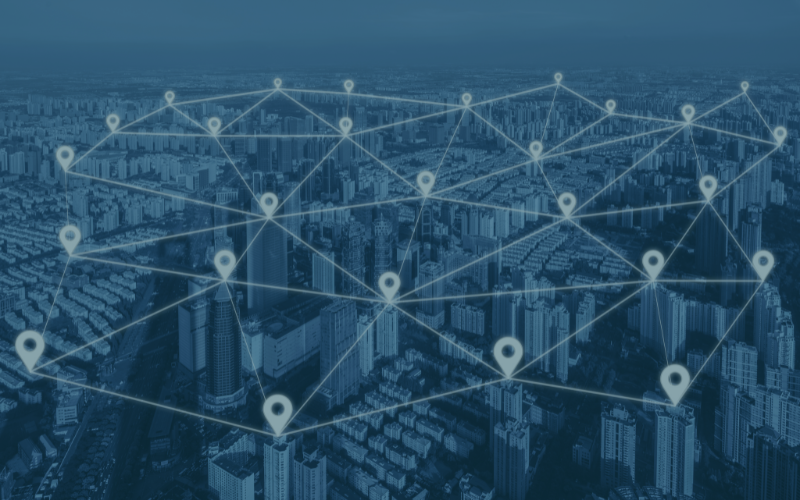Optical fiber alternatives: Internet connection options for companies
By ESED - It & CyberSecurity on Nov 13, 2024 9:40:19 AM

Despite nearly 20 years having passed since the arrival of fiber optics as the most widespread method for internet connection, there are certain areas where this connection method is not viable. This makes it necessary to seek alternatives to these connections.
What to do if fiber optics are not available in my business area?
Below, as specialists in IT and cybersecurity solutions, we will outline some of the alternatives available to access the internet if fiber optics are not a viable option for your business.
In addition, this article provides everything you need to know for secure browsing.
Alternatives to optical fiber: Satellite Internet, 5G...
Satellite Internet
For areas where fiber optic connections are not possible, one of the most talked-about alternatives is satellite internet. This system uses a satellite dish that connects to a satellite. The service provider offers a modem that connects between the satellite and the computer, similar to a router. The computer can connect to this router via LAN cable or Wi-Fi. This system offers speeds of up to 100 Mbps.
This type of connection can use either geostationary satellites (GEO) or low Earth orbit satellites (LEO).
Geostationary satellites are positioned at high altitudes (35,000 km), remaining in a fixed position relative to Earth. They offer coverage over large areas, but the distance may result in higher latency, meaning delays in data transmission.
Low Earth orbit satellites, on the other hand, are much closer to Earth (between 500 and 2,000 km), which reduces latency.
The main companies currently offering this service are Starlink (SpaceX), HughesNet, and Viasat.
5G connection
This option involves using a mobile network to provide internet access. 4G offers speeds of up to 100 Mbps, and 5G can reach up to 10 Gbps under ideal conditions.
Its latency is low, with a device taking only a few milliseconds to communicate with the network. Additionally, it allows the 'slicing' of a physical network into multiple virtual networks, enabling operators to offer different service levels or prioritize certain applications.
Some providers include Verizon, AT&T, Telefónica, and Vodafone.
Cable Internet
Cable Internet is an internet connection technology that uses existing cable TV infrastructure to offer broadband services. It is a widely available connection with the capacity to provide relatively fast speeds at a competitive cost.
These cables are designed to carry large amounts of data across a cable service provider's network.
Cable internet typically offers speeds ranging from 50 Mbps to 1 Gbps. These speeds are sufficient for most business activities, such as video conferencing or downloading large files.
Some providers include Comcast Xfinity, Spectrum, Virgin Media, and Cox Communications.
Cable internet is an ideal option for small and medium-sized businesses. It is suitable for activities like web browsing, high-definition video streaming, remote work, and other tasks that do not require extremely high bandwidth or low latency..
LTE/4G Networks
LTE/4G networks are a mobile connectivity technology. LTE (Long-Term Evolution) is an evolution of third-generation (3G) technologies and is commonly known as 4G.
This technology enables high-speed mobile internet connections and can be a viable option for businesses and users in areas where other forms of internet access (such as fiber or cable) are not available or are limited.
Speeds on LTE/4G networks vary depending on several factors, such as coverage, network congestion, and device capabilities. In general, LTE/4G can offer download speeds ranging from 10 Mbps to 100 Mbps under ideal conditions, with upload speeds between 5 and 50 Mbps.
Although the speed may be slower than fiber optics, it is generally sufficient for most business activities, such as browsing, HD video streaming, video calls, and cloud applications.
Some providers include Verizon, AT&T, Vodafone, and Movistar.
LTE/4G internet is a flexible, portable, and rapidly deployable option for businesses that need connectivity in areas where traditional options are unavailable or require a temporary or backup solution.
MPLS (Multiprotocol Label Switching)
MPLS (Multiprotocol Label Switching) is a label-switching network technology that enhances the efficiency and management of data traffic in enterprise networks. It is widely used by businesses and telecommunications service providers to interconnect offices, data centers, or geographically distributed branches, offering reliable, secure connectivity with guaranteed Quality of Service (QoS).
MPLS is ideal for applications and business environments that require high reliability, consistent performance, and service quality control. It is common in sectors such as finance, healthcare, or multinational companies that cannot afford interruptions or failures in their critical connections.
Some providers include Verizon, AT&T, and Colt Technology Services.
As IT and cybersecurity specialists, these are some of the options we recommend for obtaining internet connectivity if fiber optics are unavailable to you.
You May Also Like
These Related Stories

Pentesting vs Red Teaming: Which is the best option?

How to recover files infected by a virus?



.png?width=262&height=150&name=accio-10-negre%20(1).png)

